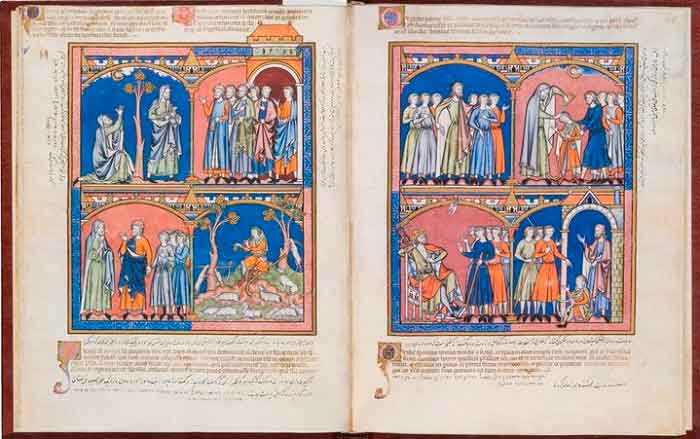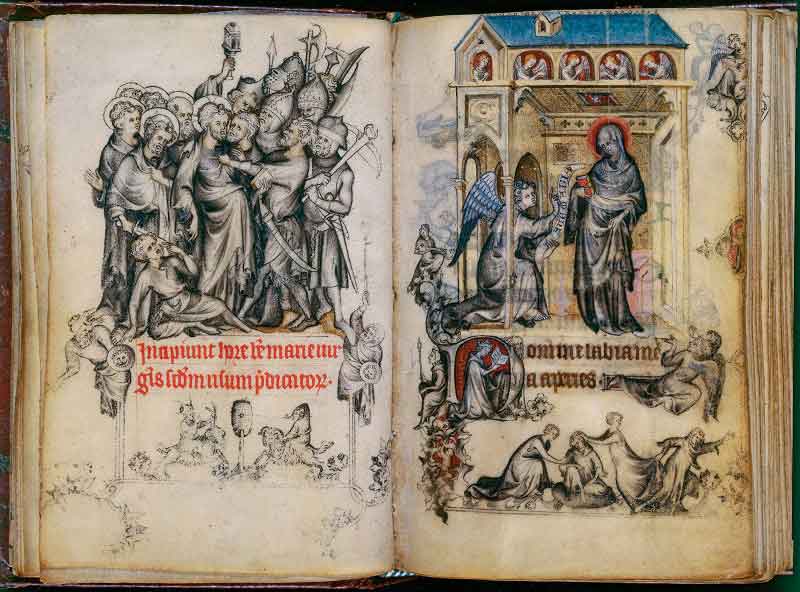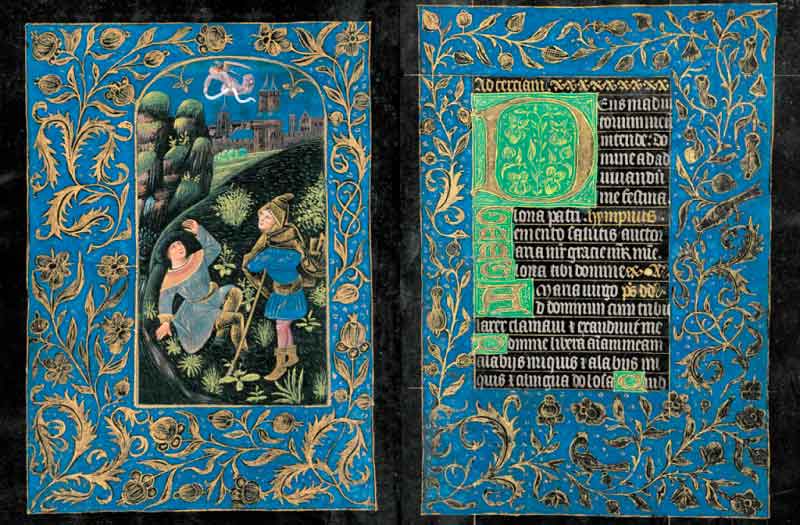
Illuminated manuscripts are one of the most mysterious objects. Handwritten medieval books, which were decorated with colorful miniatures and ornaments, despite the similarity of technology, differed in different regions and in different eras.

1250 Crusader Bible, part of the book is kept in the New York Morgan Library, another part in the National Library of France and another in the Getty Museum in the USA
To create such manuscripts, natural dyes were used, which gave amazingly deep colors. And to give the miniatures a glow, the craftsmen resorted to gold and silver.
Despite the identical technology, illuminated manuscripts differed in different eras and in different regions.
Armenian illumination: out of 30 thousand surviving manuscripts, about 10 thousand are illustrated, where about 7 thousand are full-fledged miniatures. Some of the oldest scientists refer to the VI-VII centuries. The earliest are the Gospel of Queen Mlke and the Etchmiadzin Gospel.

Spread of the Book of Hours of Jeanne d'Evreux 1324-1328, stored in the Metropolitan Museum of Art, New York
The art of creating illuminated manuscripts in Byzantium continued ancient traditions. During the period of iconoclasm, they contained images of the cross and thematic ornaments. The Macedonian Renaissance, with important stylistic shifts in art, was also characterized by the creation of such books. One of the earliest is the code of Gregory of Nazianzus.
Since the end of the 11th century, certain changes have been observed in the illumination of Byzantium. A purely miniature style is noted. Separate images rarely take up entire sheets, but become tiny “pictures” in the margins or in the text.
Illuminated manuscripts, created towards the end of the first millennium in the British Isles, are among the most striking monuments of the common heritage of Celtic culture. The Book of Kells, Lindisfarne and Darrow Gospels are some of the best-known examples.
Since the era of the Late Middle Ages, books begin to appear that are addressed to the aristocracy. This also leads to a change in the content of the manuscripts. Religious texts are still popular, but the demand for secular literature is still growing. Book design, decor, miniatures come to the fore.

Black Book of Hours 1475-1480, Morgan Library, New York
During this period, many well-known handwritten codices made in the technique of illumination appear - "The Great French Chronicles", "The Magnificent Book of Hours of the Duke of Berry" and "The Apocalypse of Saint-Sever", manuscripts by Robinet Testard.
The beginning of the end of illuminated manuscripts was the invention of the printing press by Johannes Gutenberg in 1440. However, they remained popular among aristocrats and opponents of printing.
Today, illuminated manuscripts occupy one of the first places in the well-known second-hand collections. Some copies of these books are also found on Violity in the section "Bouquinistes".
